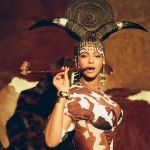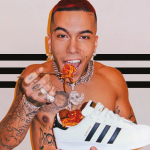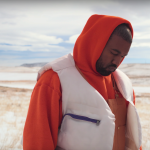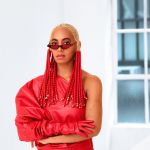
How Beyoncé used fashion in "Black is King"
The new visual album by Beyoncé is, in its essence, an ode to black beauty
August 4th, 2020
It was Beyoncé who chose Tyler Mitchell as photographer for the September edition of Vogue in 2018, making the then 23-year-old from Atlanta the first African American photographer to shoot a Vogue cover: «until there will be a mosaic of perspectives coming from different ethnic groups behind the lens, we will continue to have a narrow view of what the world really is like. When I started 21 years ago, I was told that it was difficult for me to get into magazine covers because black people didn't sell», Beyoncé said in the following interview.
The last few years of American society have proved somewhat schizophrenic as well as deeply hypocritical on the lack of diversity in the fashion world, which has continued to draw heavily from the African American aesthetic - in the same year, 2018, Virgil Abloh became the first black creative director of Louis Vuitton - never being however truly capable of guaranteeing diversity in its creative sectors and miserably failing almost every occasions in which it was possible to demonstrate the opposite. The moment of global unity that followed the killing of George Floyd and the reinvigoration of the Black Lives Matter movement, which turned on a great spotlight on the "black owned brands" and black designers, was no exception, demonstrating however onetime more the profound influence of black culture into contemporary fashion. But how are these moments of collective pride carried within the mainstream? How is a global platform guaranteed for a theme? Like so many other things that happened in the last 10 years - from feminism to art - the answer is: with Beyoncé.
On July the 31th, Beyonce debuted on Disney + "Black is King", the new visual album of the artist who has rewritten the canons of visual albums forever. In the beginning the operation had to be a mere extension of the album "The Lion King: The Gift" the album that came along the release of the movie "The Lion King"; but the peculiar historical moment pushed Beyoncé to make the celebration of the "blackness" in her work even more explicit. Written and directed by Beyoncé herself "BIK" is, in its essence, that celebration of the black beauty that the artist has chased in all the last years of her career, at least since - to quote a famous Saturday Night sketch - "the America discovered that Beyoncé was black. " Wesley Morris wrote in the New York Times that "Beauty is one reason why this film exists. The interstitial language Beyoncé uses comes, just as in "Lemonade", in part, from Warsan Shire's poem: "We were beauty before they knew what beauty was" ". Beyond the references to African popular tradition, to the hints of afrofuturism, "BIK" is above all a hymn to black aesthetics, the personal one, which finds its sublimation in "Brown Skin Girl", the moment in which they appear on the screen Naomi Campbell, Kelly Rowland, Lupita Nyong'o and the little Blue Ivy, showing all shades of black beauty, the one related to hairstyling - always one of Beyoncé's reference models in terms of beauty expression, which finds here its expression in the different African hairstyles - and, perhaps more explicitly than the rest, the one linked to the world of fashion.
On Vogue, Janelle Okwodu collected all the clothes, brands and designers used by Beyoncé in her film, acclaiming it as "the afrocentric fashion moment we were waiting for", underlining - as also done by Vanessa Friedman in the Times - as the great ability of Beyoncé in "BIK" was to be able to make dialogue and give equal dignity to the custom created specifically for her by Burberry or Balmain or Valentino to the creations of African brands, such as the Senegalese label Tongoro, or black designers such as Jerome Lamaar or Loza Maléombho, as well as - of course - Marine Serre or the dress made by the Lebanese studio Ashi Studio which required over 70 hours of work. More than celebrating the work of black designers or black owned brands, what Beyoncé did was to show how the world of fashion could put itself at the service of black beauty, respecting its canons, aesthetics and morals, in that process underway by time in different sectors of the industry, from hair care to beauty to underwear. To do this, Beyoncé consciously used what she knew would be the most direct way to show the public the fruit of her work and the aesthetics she wanted to represent: Instagram.
Immediately after the release of "Alright", the first video from "BIK" and the film itself, Instagram began to fill up with Bey's outfits. The brands themselves have posted the custom made for the artist, telling lesser-known stories and details of their work, thus conveying not only aesthetics, but also culture. Also Zerina Akers did so. She is the now historic stylist of Beyoncé, who launched the “Black Owned Everything” project, a platform for the registration of black owned businesses - from fashion brands to jewelry or beauty brands - “for when the trend is over ", for when the trend will end - as we read on the project's Instagram account - and for when the media and the fashion world will have forgotten the importance of underlining the enormous influence of black beauty in modern society.
Beyoncé learned about Tyler Mitchell's work right on Instagram, a digital place where - as happened with Twitter for Black Lives Matter - it was and is much easier for black artists to avoid gatekeepers, break down old barriers and arrive without any kind of disintermediation. It is the process that also the art critic Antwuan Sargent told in his book "The Black New Vanguard", where thanks to the role of digital he had managed to collect the works of avant-garde black artists and photographers, or even that through which Kim Jones and Dior have decided to collaborate with the artist Amoako Boafo for the latest collection of the maison. And in this digital and cross-sectoral universe that art - and by art we can also mean Beyoncé's work - is getting closer to fashion to try to tell the stylistic features of a culture that becomes increasingly important and relevant. As Tyler Mitchell said in a recent interview with the Times: "photography and fashion images are an interesting way of talking about my community, through clothing", just like Beyoncé did in "Black is King".












































































